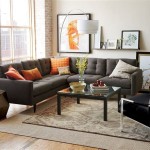Matching Chairs for Living Room: A Comprehensive Guide
Selecting chairs for a living room involves more than just finding comfortable seating. The aesthetic appeal of the chairs and how they harmonize with the overall design of the space are equally critical. While a mismatched or eclectic approach can be visually stimulating, opting for matching chairs offers a sense of cohesion, balance, and formality. This comprehensive guide explores the nuances of incorporating matching chairs into a living room, covering various styles, arrangements, and considerations to ensure a successful and aesthetically pleasing outcome.
The term "matching chairs" encompasses a range of possibilities. It can refer to identical chairs, chairs that share a common design element (such as fabric or leg style), or chairs that complement each other in terms of color and scale. The specific interpretation of "matching" depends on the desired aesthetic and the existing elements within the living room.
Understanding the Benefits of Matching Chairs
Matching chairs provide several advantages in a living room setting. First and foremost, they contribute to visual harmony. The repetition of a design element, such as the chair style or upholstery, creates a sense of order and balance within the space. This is particularly beneficial in rooms that are already characterized by a complex or eclectic mix of furniture and accessories.
Secondly, matching chairs can enhance the perceived symmetry of a room. By placing identical chairs on either side of a focal point, such as a fireplace or a large window, a sense of equilibrium is established. This is a classic design principle that contributes to a feeling of calmness and stability.
Finally, using matching chairs simplifies the furniture selection process. Instead of searching for individual chairs that complement each other, the focus shifts to finding a pair or set of chairs that meet all the desired criteria, such as comfort, style, and budget. This streamlined approach can save time and effort, particularly when furnishing a new home or redecorating an existing space.
Exploring Different Styles of Matching Chairs
The style of matching chairs should align with the overall design theme of the living room. There are numerous styles to choose from, each offering a distinct aesthetic.
For a traditional living room, classic wingback chairs upholstered in a rich fabric like velvet or brocade can create a sense of elegance and formality. These chairs are often characterized by their high backs, supportive wings, and sturdy wooden legs. Other traditional styles include club chairs, which feature rounded arms and deep seats, and occasional chairs, which are typically smaller and more decorative.
In a modern or contemporary living room, sleek and minimalist chairs are often preferred. These chairs typically feature clean lines, simple shapes, and neutral colors. Materials like leather, metal, and molded plastic are commonly used. Accent chairs with geometric shapes or bold colors can add a touch of personality to a modern space.
For a more relaxed and inviting living room, upholstered armchairs with soft cushions and comfortable fabrics like linen or cotton are a good choice. These chairs are often paired with ottomans or footstools to create a cozy seating area. Bohemian or eclectic living rooms can incorporate a variety of chair styles, as long as they share a common design element, such as a similar color palette or a shared material.
Mid-century modern chairs, characterized by their clean lines, organic shapes, and use of materials like wood and leather, are versatile enough to complement various living room styles. Their timeless design ensures they remain a popular choice.
Arranging Matching Chairs in the Living Room
The arrangement of matching chairs is crucial to the overall flow and functionality of the living room. Several common arrangements can be employed, depending on the size and shape of the room, as well as the intended use of the seating area.
One popular arrangement is to place matching chairs opposite a sofa, creating a symmetrical and balanced seating area. This arrangement is ideal for conversation and provides ample seating for guests. The chairs can be positioned directly across from the sofa or angled slightly to create a more informal and inviting atmosphere.
Another common arrangement is to place matching chairs side-by-side, creating a unified seating area. This arrangement is particularly effective when the chairs are positioned in front of a fireplace or a large window, providing a comfortable and visually appealing focal point. A coffee table or ottoman can be placed in front of the chairs to enhance their functionality.
In larger living rooms, matching chairs can be used to create multiple seating areas. For example, a pair of chairs can be placed in a corner of the room, creating a cozy reading nook. Another pair of chairs can be placed near a window, providing a comfortable spot to enjoy the view. This approach allows for greater flexibility and customization, accommodating different activities and preferences.
Consider the traffic flow within the living room when arranging the chairs. Ensure that there is ample space for people to move around the furniture without feeling cramped or obstructed. Avoid placing chairs in doorways or walkways, as this can create a bottleneck and disrupt the overall flow of the room.
Considerations When Selecting Matching Chairs
Several factors should be considered when selecting matching chairs for a living room. These factors include the size and scale of the chairs, the comfort level, the durability of the materials, and the overall budget.
The size and scale of the chairs should be proportional to the size of the living room. Large, oversized chairs can overwhelm a small room, while small, dainty chairs can get lost in a large room. Consider the dimensions of the chairs carefully, taking into account the height, width, and depth of the seating area. Measure the available space in the living room to ensure that the chairs will fit comfortably without crowding the room.
Comfort is paramount when selecting chairs for a living room. After all, the chairs are intended to provide a comfortable and relaxing place to sit. Look for chairs with supportive cushions, comfortable armrests, and a suitable seat height. Test out the chairs before purchasing them to ensure that they meet the desired comfort level. Consider the type of activities that the chairs will be used for. If the chairs will be used primarily for reading, opt for chairs with high backs and supportive headrests. If the chairs will be used primarily for conversation, opt for chairs with upright backs and comfortable armrests.
The durability of the materials is also an important consideration. Choose chairs that are made from high-quality materials that can withstand everyday wear and tear. Consider the type of fabric or leather used to upholster the chairs. Some fabrics are more durable and stain-resistant than others. Check the construction of the chair frame to ensure that it is sturdy and well-built. Wood frames are generally more durable than metal frames.
Finally, consider the overall budget when selecting matching chairs. Chairs can range in price from a few hundred dollars to several thousand dollars. Set a budget before starting the search to avoid overspending. Consider purchasing used or refurbished chairs to save money. There are many reputable retailers that sell high-quality used furniture at discounted prices.
Fabric and Material Choices for Matching Chairs
The choice of fabric and material for matching chairs significantly impacts the overall look and feel of the living room. Different materials offer varying levels of durability, comfort, and aesthetic appeal.
Leather chairs offer a sophisticated and durable option for a living room. Leather is known for its longevity, resistance to stains, and ability to develop a rich patina over time. Leather chairs are available in a variety of colors and styles, from classic brown leather armchairs to sleek and modern leather accent chairs. However, leather can be more expensive than other upholstery options and may require special cleaning and maintenance.
Fabric chairs offer a wider range of options in terms of color, pattern, and texture. Fabrics like linen, cotton, velvet, and microfiber are popular choices for living room chairs. Linen and cotton are breathable and comfortable, while velvet adds a touch of luxury and sophistication. Microfiber is a durable and stain-resistant option that is ideal for homes with children or pets. Consider the overall style of the living room when selecting a fabric for the chairs.
Wood chairs offer a natural and timeless aesthetic. Wooden chairs can be used as accent pieces or as part of a larger seating arrangement. Wood chairs are available in a variety of styles, from classic Windsor chairs to modern Eames chairs. Consider the type of wood used to construct the chairs. Hardwoods like oak, maple, and cherry are more durable than softwoods like pine. Look for chairs with a durable finish that will protect the wood from scratches and stains.
Metal chairs offer a contemporary and industrial aesthetic. Metal chairs can be used as accent pieces or as part of a larger seating arrangement. Metal chairs are available in a variety of styles, from sleek and minimalist designs to more ornate and decorative options. Consider the type of metal used to construct the chairs. Steel and aluminum are popular choices for their strength and durability. Look for chairs with a rust-resistant finish to protect the metal from corrosion.
Incorporating Color and Pattern
Color and pattern play a vital role in the visual impact of matching chairs. The chosen color palette should complement the existing décor and create a harmonious atmosphere.
Neutral colors, such as beige, gray, and white, are versatile and can be easily incorporated into any living room. Neutral chairs provide a blank canvas that allows other elements in the room to take center stage. Add pops of color with accent pillows, throws, and artwork.
Bold colors, such as red, blue, and green, can add a touch of personality and vibrancy to a living room. Bold chairs can be used as focal points or to complement other colorful elements in the room. Be mindful of the overall color scheme and avoid using too many competing colors.
Patterns can add visual interest and texture to matching chairs. Geometric patterns, floral patterns, and abstract patterns are all popular choices. Consider the scale of the pattern when selecting chairs for a living room. Large-scale patterns can overwhelm a small room, while small-scale patterns can get lost in a large room.
When mixing and matching patterns, ensure that they share a common color or theme. This will help to create a cohesive and harmonious look. Use pattern sparingly and avoid using too many competing patterns in a single space.
Ultimately, the selection of matching chairs for a living room is a matter of personal preference and style. By considering the various factors outlined in this guide, individuals can make informed decisions that result in a comfortable, functional, and aesthetically pleasing living space.

Making Changes In The Family Room

Top 10 Accent Chair Living Room Ideas To Transform Your Space Decorilla Online Interior Design

The Art Of Mixing And Matching How To Pair Hamptons Armchairs With Other Decor Elements La Maison

Matching Chairs Living Room

Does Living Room Furniture Have To Match The Pamaro Shop

3 Piece Living Room Sofa Set With Upholstered Loveseat Couch Armless Accent Chairs Tan

How To Mix And Match Chairs Like A Pro Huffpost Life

30 Living Room Accent Chairs Ideas That Enhance Your Space
:max_bytes(150000):strip_icc()/CarinaSkrobeckiPhoto_JessicaNelsonDesign_252222ndAve_01-47bc103d13e34f8d89179a86e968e7eb.jpg?strip=all)
12 Rules To Arrange Living Room Furniture

Stylish Living Room Chairs For Every Home West Elm








